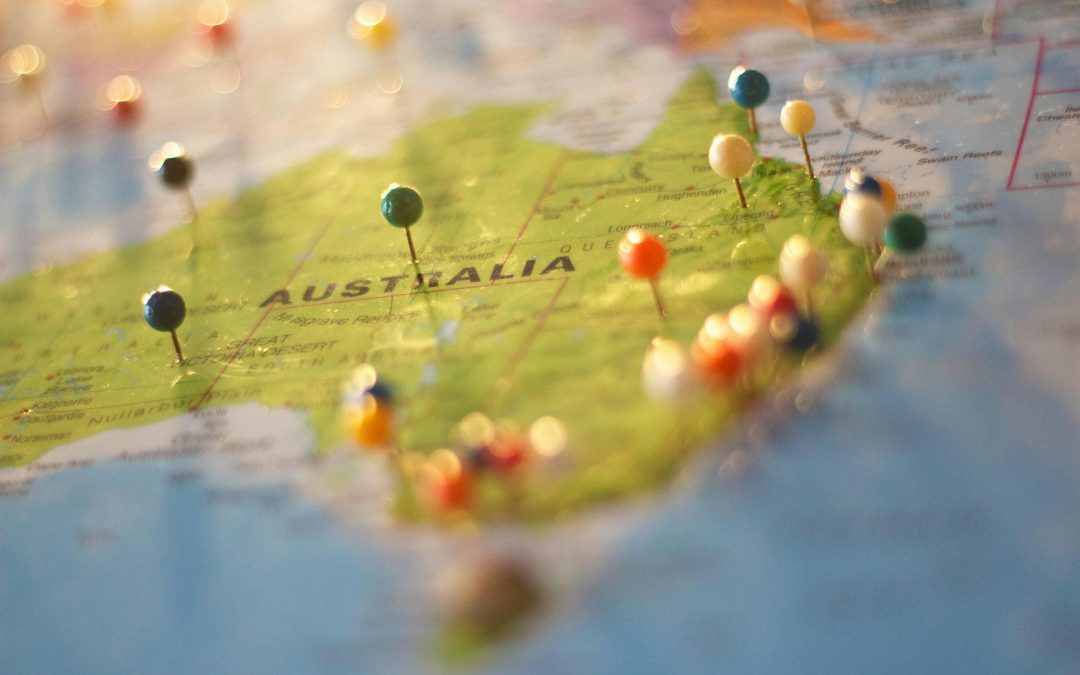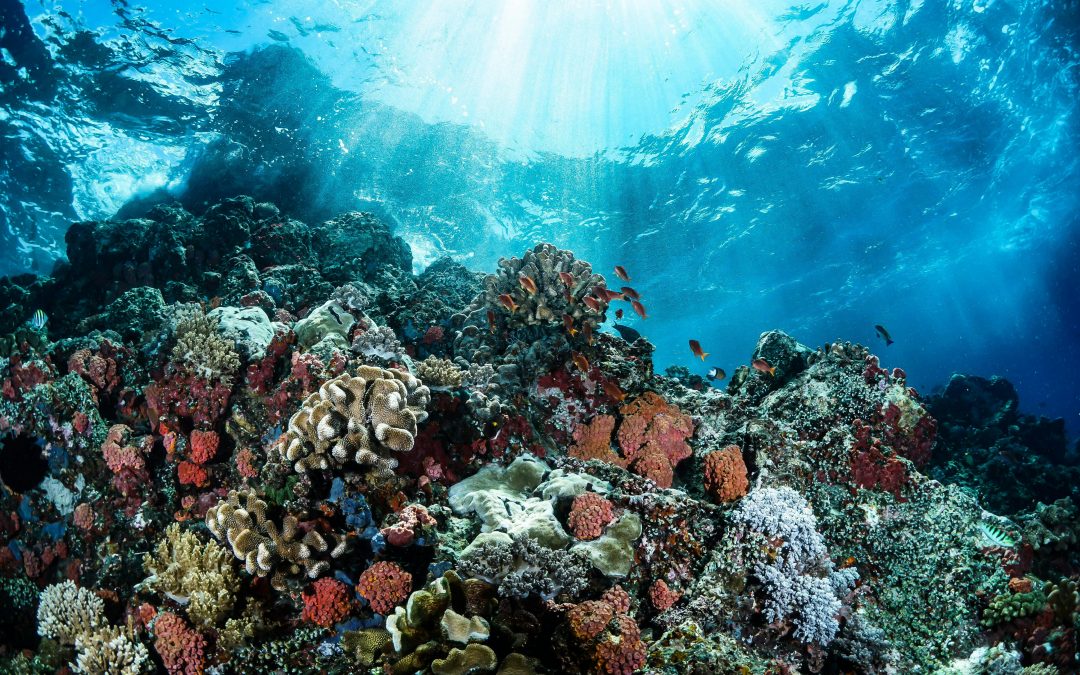
GREAT BARRIER REEF - Comment visiter de manière responsable après un blanchiment record (et faire un voyage qui changera votre vie)
La Grande Barrière de Corail (GBR) n'est pas en train de mourir, elle est en train de changer, plus vite que la plupart d'entre nous ne l'imaginaient. Si vous prévoyez de vous y rendre en 2025, vous pourrez encore passer des journées lumineuses et impressionnantes dans l'eau. Mais la façon dont vous choisissez les opérateurs, les récifs, le moment et la façon dont vous vous déplacez dans l'océan comptent plus que jamais. Ce guide de longue haleine distille les dernières données scientifiques et les informations les plus pratiques pour les voyageurs, afin que vous puissiez faire le voyage correctement : avec respect, réalisme et joie.
1) Ce qui s'est réellement passé (et ce que cela signifie pour votre voyage)
Commençons par la vérité qui fixe le plan : l'été 2024 a donné lieu à l'épisode de blanchiment massif le plus étendu dans l'espace jamais enregistré sur la GBR, Cet épisode a été suivi d'un stress thermique supplémentaire jusqu'au début de l'année 2025. Cet événement, qui s'inscrit dans le cadre du quatrième épisode de blanchissement mondial déclaré en avril 2024, a provoqué un stress thermique dans l'ensemble de l'Europe. les trois régions - Nord, Centre et Sud GBR. Les Institut australien des sciences de la mer (AIMS) Résumé annuel 2024/25 du programme de surveillance à long terme (publié 6 août 2025) rapporte des baisses substantielles de la couverture moyenne en coraux durs à travers le récif, avec gouttes régionales d'environ 14-30% par rapport aux niveaux de 2024 ; certains récifs individuels ont subi des pertes supérieures à 70%. Croissance rapide Acropora Les coraux, qui sont souvent les premiers à s'épanouir lors de la reprise, ont été parmi les plus durement touchés cette fois-ci.
L'AIMS met l'accent sur un nouveau modèle inquiétant : volatilité. La couverture corallienne a joué au yo-yo entre les hauts et les bas selon des cycles exceptionnellement courts, signe d'une crise de l'environnement. écosystème sous pression de la chaleur, des cyclones, des panaches de crue et des épidémies d'étoiles de mer à couronne d'épines (COTS). Cependant, l'AIMS note également que des vestiges coralliens considérables, Certains récifs ont conservé une bonne couverture, en particulier dans la région centrale, tandis que d'autres ont été durement touchés. Les salles de presse résumant le rapport (par ex, ABC News et Al Jazeera) se sont fait l'écho de ces points : la la plus forte baisse jamais enregistrée pour les régions septentrionales et méridionales au cours d'une seule année, une retour proche aux moyennes à long terme dans certains domaines, et un avenir dans lequel les épisodes de chaleur sont plus fréquents.
Les voyages à emporter :
- Vous pouvez encore faire de belles plongées en apnée sur le GBR en 2025. Les résultats dépendent où vous allez et qui vous allez avec.
- Fixer des attentes pour disparitéLe corail est un élément essentiel de l'écosystème : un bommie en bonne santé sur un site, un corail pâle ou récemment endommagé sur le site suivant.
- Vos choix...opérateur, site, saison, comportements-Les résultats de l'évaluation de l'état du récif sont maintenant directement liés à votre expérience et à l'arc de rétablissement du récif.
2) Comprendre le blanchiment (pour lire le récif comme un local)
Blanchiment en masse est une réponse au stress : les coraux expulsent leurs algues symbiotiques (zooxanthelles) lorsque les températures de la mer dépassent leurs seuils, perdent leur couleur et, si le stress persiste, meurent. Le blanchiment ne se termine pas toujours par une mortalité ; il peut se rétablir si la chaleur diminue rapidement. Le problème en 2024 était le l'étendue spatiale pure et l'intensité du stress thermique, combinés à d'autres perturbations (deux cyclones en décembre 2023/janvier 2024, des panaches d'inondation et une activité COTS localisée) qui ont aggravé les impacts. AIMS’Le programme de la Commission européenne, qui surveille les récifs depuis 39 ans, fournit le contexte de référence, région par région, auquel vous devriez vous fier lorsque vous évaluez les titres sensationnels.
Pour le voyageur, cela se traduit par un état d'esprit simple mais puissant : supposer une variabilité et rechercher des opérateurs qui sélectionnent quotidiennement des sites en fonction des conditions. Entre les fenêtres de marée, l'angle du soleil, le vent et la houle, un skipper compétent peut vous placer sur une bommie avec de la couleur, de la vie piscicole et des coraux mous, même pendant une année difficile pour la pêche à la baleine. Acropora.
3) Où se baser (et pourquoi c'est important)
Cairns et Port Douglas (portes d'entrée de la région centrale) :
- Avantages : La plus grande flotte et accès à l'étagère extérieure aux récifs en ruban et à l'eau claire ; de nombreux Tourisme de haut niveau (voir §4).
- Inconvénients : populaire = pontons plus encombrés ; réservez à l'avance pour les boutiques ou les petits groupes.
Townsville et l'île magnétique :
- Avantages : Accès aux récifs centraux tels que Pierre de taille, John Brewer (site du Musée d'art subaquatique), et expériences côtières dans les forêts de palmiers.
- Inconvénients : les conditions sont plus sensibles au vent ; les distances peuvent être plus longues.
Airlie Beach / Whitsundays (chevauchement sud/centre) :
- Pour : Récifs frangeants les parcs nationaux en dehors des îles peuvent être étonnamment résilients ; les séjours sur l'île se construisent à l'intérieur de l'île. forêt tropicale + récif variété.
- Inconvénients : la visibilité peut varier ; vous aurez besoin d'opérateurs qui savent quelles baies sont les plus dégagées après les changements de vent.
Lady Elliot & Lady Musgrave (Capricorn-Bunker, sud de la GBR) :
- Pour : Porte d'entrée sud avec des stations de nettoyage de mantas (Lady Elliot), des tortues, et d'excellentes science citoyenne Les eaux hivernales sont souvent plus claires.
- Inconvénients : la logistique (vols/bateaux) augmente les coûts ; la capacité limitée se remplit rapidement.
Cooktown & Cape York (Northern GBR) :
- Pour : Bateaux de croisière éloignés, moins de bateaux ; peut être sublime pendant les saisons intermédiaires lorsque le temps se stabilise.
- Inconvénients : lourdeur de la logistique ; certains secteurs du nord ont subi une forte pression en 2024 - il faut se fier aux informations actuelles des opérateurs.
Comment choisir en 2025 : Si vous voulez une flexibilité maximale du site et les chances les plus élevées d'avoir un bon corail cette année, le Région centrale autour de Cairns/Port Douglas est souvent le pari le plus sûr après l'événement de 2024 (AIMS a rapporté une stabilité relativement meilleure dans certaines parties du centre de la GBR par rapport au nord/sud). Si vous appréciez les rencontres avec les mantas et les tortues et que la capacité d'accueil est plus faible, envisagez les options suivantes portes d'entrée du sud (Lady Elliot/Musgrave) ou Récifs frangeants des îles Whitsunday sous le vent des îles.
4) Choisir le bon opérateur (votre décision la plus importante)
Ce à quoi ressemblera le “bien” en 2025 :
- Haut niveau l'accréditation des parcs marins (ou une écocertification équivalente) avec des protocoles transparents pour le soin des récifs.
- Rotation quotidienne des sites afin d'éviter la pression sur les bommies en cours de récupération.
- Briefings sur la plongée avec palmes et tuba, sur les comportements à ne pas toucher et à ne pas rester debout, et sur l'étiquette de la photographie.
- Science citoyenne des liens (fiches d'enregistrement de l'intensité du blanchiment, comptage des poissons, observations d'invertébrés) qui renvoient des données aux gestionnaires.
- Surveillance COTS & la participation aux programmes de réponse lorsqu'elle est autorisée.
Questions à poser avant de réserver :
- “Quels sont les récifs que vous visitez lorsque le vent vient de X direction ?” Vous vérifiez flexibilité opérationnelle.
- “Comment vos guides traitent-ils un site qui présente un blanchiment récent ?” Cherchez un plan pour changer de site et éduquer, Il s'agit de ne pas pousser les gens vers des correctifs fragiles.
- “La taille des groupes est-elle limitée dans l'eau ?” Des ratios plus faibles protègent à la fois les récifs et l'expérience des clients.
- “Pouvez-vous nous faire part de vos observations sur la couverture corallienne et la vie des poissons sur les sites que vous avez utilisés cette semaine ?” Les grands opérateurs sont fiers de parler de conditions.
Pourquoi c'est important : L'AIMS montre une grande variabilité spatiale après 2024 ; l'intelligence des opérateurs locaux fait la différence entre une journée médiocre et une journée mémorable. L'intelligence de l'opérateur local est la différence entre une journée sans intérêt et une journée mémorable. meilleurs bateaux ont des skippers qui étudient les marées, le vent et la visibilité comme des sommeliers étudient le terroir.
5) Le plan de match mois par mois
- Janvier-mars : Eaux chaudes, variabilité des conditions météorologiques tropicales et fin de la saison chaude. Livre départs tôt le matin pour éviter le clapot de l'après-midi. Soyez réalistes : risque accru d'orages d'été. jours tampons afin que vous puissiez faire glisser votre voyage sur le récif.
- Avril-Mai : L'épaule dans le saison sèche; L'amélioration de la visibilité, la diminution des tempêtes - souvent un endroit calme pour les plongeurs avec tuba.
- Juin-août (saison sèche) : Visibilité maximale fenêtres sur les récifs extérieurs et des vents relativement stables. sud de la GBR (mantas à Lady Elliot).
- Septembre-octobre : Retour de la chaleur ; excellent pour Récifs frangeants des îles Whitsunday avec des vents plus faibles ; les croisiéristes du nord peuvent briller si les conditions s'améliorent.
- Novembre-décembre : Retour à la saison des tempêtes ; l'eau se réchauffe ; livre flexible et surveillez les prévisions.
Tout au long du processus, n'oubliez pas que direction du vent (vents du sud-est contre vents du nord), pluies récentes, et l'heure de la marée la clarté au quotidien. L'opérateur qui mouvements vers le récif sous le vent ce matin-là vous donne la victoire.
6) Sites de plongée et de snorkeling : Ce qui est probable
Récifs extérieurs (Cairns/Port Douglas) :
- Les récifs en ruban et les bommies peuvent encore faire l'affaire. les passes à tortues, les palourdes géantes, les fusiliers en bancs et les coraux mous sur les corniches. Il faut s'attendre à un mélange de plaques et de zones robustes montrant mortalité récente ou paling, en particulier dans les Acropora des fourrés. Les meilleurs jours combinent clarté de l'eau bleue avec coins balayés par le courant où la vie piscicole s'épanouit.
Récifs frangeants (Whitsundays) :
- Autour de Hook, Whitsunday, Haslewood les îles, les bommies et les baies de l'intérieur des récifs peuvent être étonnamment vivantes après 2024, et shore-snorkels des plages de l'île ajoutent de la liberté au plan. Vis est sensible aux vents et aux marées ; demandez aux opérateurs de vous informer sur les conditions d'utilisation de l'appareil. marée basse fenêtres.
Les casquettes du Sud (Lady Elliot/Lady Musgrave) :
- Stations de nettoyage des mantas, Les jardins d'eau, les jardins de récifs et les herbiers de tortues. Les agrégations saisonnières font de la faune prévisible; Les coraux ici ont un aspect différent de celui de l'eau. profil thermique et profil du panache d'inondation que les récifs du nord/centre, ce qui peut jouer en votre faveur selon l'année.
Nord de la Grande Bretagne et croisières lointaines :
- Les meilleurs bateaux de croisière analysent les conditions chaque semaine et sont francs quant aux sites qui ont besoin de temps pour se remettre de la chaleur de 2024. Si vous êtes un plongeur habitué qui a adoré un récif de brousse nordique, demandez images actuelles et être ouvert à de nouveaux sites.
7) Comment être bon dans l'eau (Petites habitudes, grand impact)
Les nageoires sont relevées, le corps est plat, les mains ne sont pas en contact avec le sol.
- Les dommages accidentels les plus courants sont coup de pied sur du corail vivant. Plongée avec masque et tuba avec légère flottabilité positive, Gardez vos palmes derrière la ligne du corps, et photographie de juste au-dessus la structure, et non dans la structure.
Pas de position debout, pas d'agenouillement.
- Même les substrats d'apparence morte ont souvent le recrutement de mineurs; Ce qui ressemble à des décombres peut être la pépinière qui repeuplera cette zone dans quelques années.
La crème solaire est importante.
- Utilisation sans danger pour les récifs (à base de zinc, sans oxybenzone/octinoxate). Appliquer au moins 20 minutes avant d'entrer dans l'eau, afin qu'il adhère à votre peau plutôt que de se détacher. De nombreux opérateurs fournir ou vendre une crème solaire approuvée à bord.
L'étiquette de la faune.
- Les tortues doivent surface; ne pas leur barrer la route. Donner raies et requins l'allée. Jamais poursuivre, coincer ou tenter de toucher les animaux sauvages ; les meilleures photos sont celles de comportement naturel, Les guides aiment les clients qui leur facilitent la tâche. (Les guides aiment les clients qui leur facilitent la tâche).
Photographie :
- Si vous réalisez des prises de vue macro/vidéo à proximité de coraux, contrôlez votre garniture pour que votre corps n'entre jamais en contact avec le récif ; entraînez-vous avec votre appareil photo sur le bateau pour ne pas avoir à se tromper de structure vivante.
Pourquoi cela est important en 2025 : Le rétablissement dépend le recrutement (les bébés coraux s'installent et survivent). Un pied imprudent sur une zone en voie de rétablissement est une recul le récif n'en a pas besoin. L'AIMS souligne que des coraux à croissance plus rapide qui ont entraîné des rebondissements rapides entre 2017 et 2024 ont subi un coup dur en 2024 ; nous devrions donner aux nouvelles cohortes toutes les chances de s'imposer.
8) La conversation sur le climat (et ce que vous pouvez faire sans vous sentir coupable)
Il est normal de se demander si vous devrait ne vont pas du tout. Les scientifiques, les gestionnaires et de nombreux propriétaires traditionnels affirment que une visite réfléchie fait partie de la solution : il finance la gestion des récifs, soutient les opérateurs qui respectent les meilleures pratiques, et transforme les visiteurs en témoins et défenseurs. Le rapport 2025 de l'AIMS et les groupes de protection de la nature tels que WWF-Australie souligner que réduction des émissions est le jeu à long terme et que l'avenir du récif dépend de la capacité de l'Union à se développer et à s'adapter. des objectifs climatiques plus ambitieux aux côtés de l'intendance locale. On ne peut pas résoudre le problème du climat tout seul, mais on peut le faire :
- Choisir Haut niveau les opérateurs qui réduisent au minimum les facteurs de stress locaux.
- Décalage vos vols par le biais de projets complémentaires réputés (les mangroves et le carbone bleu sont des thèmes qui s'accordent bien).
- Soutenir les ONG qui travaillent sur restauration, Les projets relatifs à la qualité de l'eau, de la canne à sucre à la mer.
9) Constructeur de voyage pratique
Vols et portes d'entrée : Cairns (CNS) pour les récifs extérieurs du centre ; Proserpine/Whitsunday Coast (PPP) ou Hamilton Island (HTI) pour les Whitsundays ; Bundaberg/Gladstone pour les bateaux d'une journée pour les récifs du sud ; vols régionaux pour Lady Elliot (avions légers). Construire un jour tampon météo en segments de récifs.
Hébergement :
- CairnsLe port de plaisance de Marlin est facilement accessible à pied ; de nombreux bateaux de petits groupes y accostent.
- Port DouglasLe plus : ambiance de station balnéaire + plus proche des récifs extérieurs ; soirées plus calmes.
- Airlie BeachCulture de la voile et du shopping sur les îles ; bon pour les récifs de franglais et les plages.
- Heron, Lady Elliot: séjour sur les îles récifales pour les plongées au lever du soleil et le ciel nocturne.
Liste de colisage (en plus de la liste habituelle) :
- Manches longues protège-couilles/leggings (protection contre le soleil et la gelée)
- Désembuage gouttes ou shampooing pour bébé
- Crème solaire sans danger pour les récifs + baume à lèvres
- 2ème sangle de masque / joint torique de rechange pour l'appareil photo de plongée
- Sac de séchage + serviette en microfibre
- Mal de mer groupes ou des médicaments (jours de vent)
- Semelle souple chaussures d'eau pour les débarquements sur les îles (pas sur le corail)
- Banque d'alimentation (les bateaux peuvent avoir une charge limitée)
- Petit premiers secours (ampoules, gouttes pour les oreilles)
Assurance : Assurez-vous que votre police couvre plongée avec tuba/plongée, météo des perturbations, et - si vous arrivez en petit avion sur des îles récifales - des perturbations de la circulation.exclusions dans le domaine de l'aviation. (Certains contrats de cartes de crédit ne le prévoient pas).
10) Deux itinéraires idéaux
Itinéraire A - The Central-Reef Classic (6 jours, vol aller/retour Cairns)
Jour 1 : Arrivée à Cairns → promenade sur l'Esplanade au coucher du soleil, goûter aux marchés nocturnes.
Jour 2 : Plongée en apnée en petit groupe vers deux sites de récifs extérieurs (l'opérateur effectue une rotation vers la meilleure vue).
Troisième jour : Forêt tropicale de Daintree jour (à l'ombre pour la récupération de la peau), Mossman Gorge Boardwalk.
Jour 4 : Plongée dans les récifs extérieurs/plongée en apnée #2 (différents sites) ; ajouter un journal de bord de la science citoyenne à bord.
Jour 5 : Matinée libre → Reef Teach/Séance au musée → boissons au crépuscule à Wharf One.
Jour 6 : Demi-journée tampon ; si les vents ont été violents plus tôt, c'est votre demi-journée tampon. jour du récif de sauvegarde → fly out.
Itinéraire B - Fringing + Manta Magic (7-8 jours, Whitsundays + Lady Elliot)
Jour 1 : Vol vers HTI/PPP → ferry vers Airlie → sunset boardwalk.
Jour 2 : Journée de la voile avec 2 tubas à franglais (synchronisation à marée basse).
Troisième jour : Whitehaven + Hill Inlet randonnée et blues ; baignade tardive.
Jour 4 : Journée de la liberté Fringe-reef (kayak/SUP ; plongée en apnée sur le rivage dans une baie protégée).
Jour 5 : Vol/ferry vers le sud jusqu'à Île Lady Elliot → promenade à plat sur le récif du coucher du soleil (guidée).
Jour 6 : Manta/tortue plongée avec masque et tuba ; après-midi de discussion sur les sciences citoyennes ; ciel nocturne.
Jour 7 : Vitrage plongée en apnée le matin → départ en avion.
Jour 8 (tampon) : Journée de glissement de température / arrêt culturel sur le continent (distillerie de Bundaberg et tortues en fonction de la saison).
11) FAQ
La Grande Barrière de Corail vaut-elle encore la peine d'être visitée en 2025 après le blanchiment de 2024 ?
Oui-avec des attentes ajustées. Le rapport 2025 de l'AIMS confirme des déclins régionaux significatifs mais aussi corail restant substantiel et une forte variabilité spatiale. Un opérateur compétent peut encore trouver coloré, poissonneux sites ; penser beauté inégale plutôt que des jardins uniformes.
Quelle est la région qui a le plus de chances de bénéficier d'une bonne plongée en apnée ?
Elle varie en fonction du temps, mais Centre GBR (Cairns/Port Douglas) a conservé des parcelles notables et a souvent le plus grand nombre d'habitants. flexibilité du site. Portes d'entrée du sud (Lady Elliot/Musgrave) peut également briller pour la mégafaune. Consultez les rapports récents des opérateurs et les résumés de l'AIMS.
Qu'est-ce que l'AIMS a rapporté exactement en août 2025 ?
Suite à la 2024 blanchiment de masse, couverture moyenne de coraux durs décliné 14-30% au niveau régional, avec le les pertes les plus importantes en une seule année record pour le nord et le sud. De nombreux récifs restent au-dessus ou proches des moyennes à long terme. très variable de récif à récif.
Puis-je apporter mon aide lors d'une visite ?
Livre Haut niveau les opérateurs, l'enregistrement des observations pour science citoyenne, éviter le contact avec le corail, utiliser crème solaire sans danger pour les récifs, et soutenir les ONG. Le WWF-Australie et d'autres organisations plaident en faveur de des objectifs d'émissions plus ambitieux pour 2035-Prêtez votre voix.
Qu'en est-il des cyclones et des inondations ? Vont-ils gâcher mon voyage ?
Ils font partie des tropiques. Construire jours tampons, utiliser tôt le matin les départs pour des mers plus calmes, et laissez votre opérateur déplacer des sites avec du vent. AIMS note cyclones/inondations composé Impacts en 2024-25 ; une planification flexible est votre meilleure protection en matière de voyage.
Est-ce qu'un bateau de croisière est toujours une bonne idée ?
Si vous êtes un plongeur à l'esprit flexible, oui. Demandez photos du site actuel, Les résultats de l'enquête ont montré comment les itinéraires ont évolué après 2024, et ce que l'on peut attendre de l'enquête sur le terrain. récifs alternatifs qu'ils utilisent si les favoris traditionnels se rétablissent. Patchiness plaide en faveur de skippers ayant un large cahier des charges.

Écrit par Kariss
Plus de cette catégorie

L'Océanie dévoilée
L'Océanie n'est pas seulement une région, c'est une révélation. Comprenant l'Australie, la Nouvelle-Zélande et les îles du Pacifique, elle s'étend sur le plus grand océan du monde, offrant aux voyageurs une tapisserie de paysages sauvages, de cultures anciennes et d'une simplicité pleine d'âme.

L'Océanie dévoilée
L'Océanie n'est pas seulement une région, c'est une révélation. Comprenant l'Australie, la Nouvelle-Zélande et les îles du Pacifique, elle s'étend sur le plus grand océan du monde, offrant aux voyageurs une tapisserie de paysages sauvages, de cultures anciennes et d'une simplicité pleine d'âme.

L'Océanie dévoilée
L'Océanie n'est pas seulement une région, c'est une révélation. Comprenant l'Australie, la Nouvelle-Zélande et les îles du Pacifique, elle s'étend sur le plus grand océan du monde, offrant aux voyageurs une tapisserie de paysages sauvages, de cultures anciennes et d'une simplicité pleine d'âme.
0 Commentaires
Notre lettre d'information


0 commentaires